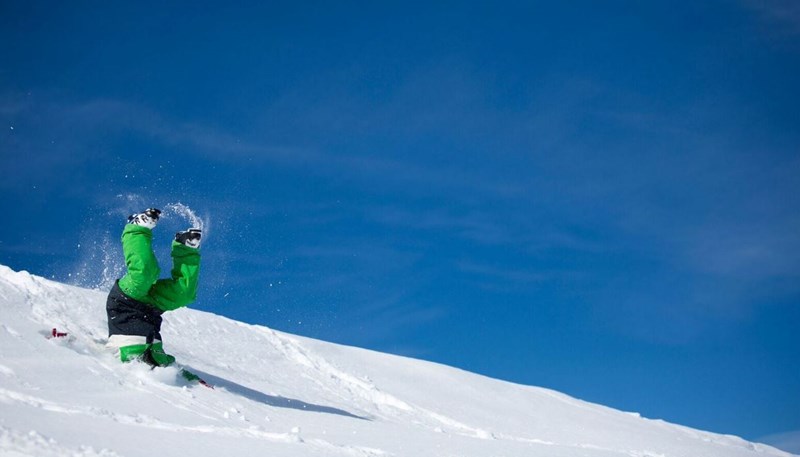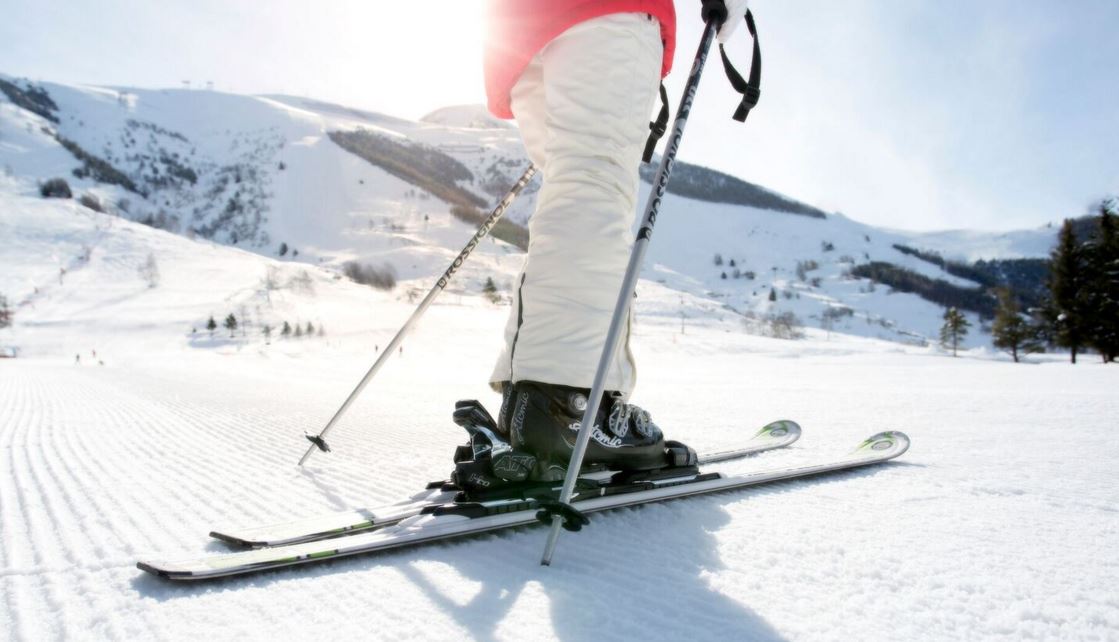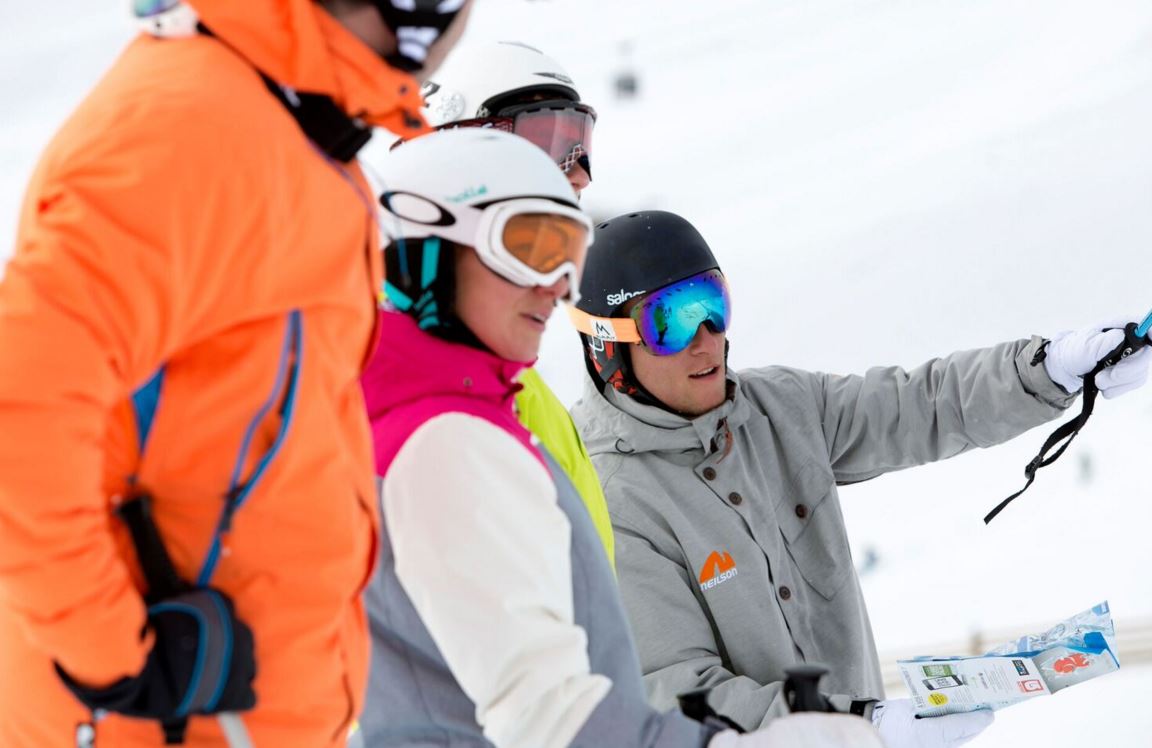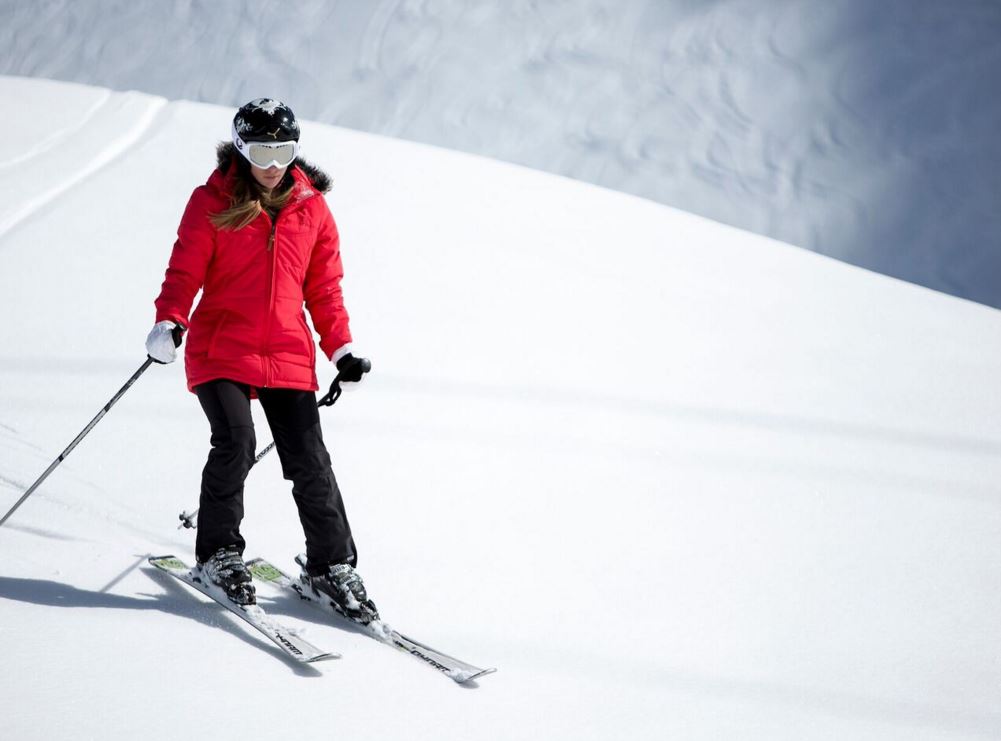
Despite the ski season starting in December, according to Google*, January is the month when the most people look for information around learning to ski.
To help beginners get a handle on what to expect from their first holiday, Paul Deadman, ski expert at Neilson Holidays, shares ten things you need to know before skiing abroad for the first time.
Get a bit fitter. There’s no need to go into any extreme fitness training before a ski holiday, but doing a small amount of exercise in preparation for your holiday will make a big difference to your fun factor.
Your quad muscles (thighs) will get a big workout, so it’s wise to strengthen your legs as much as you can in the weeks before you go. However, increasing your stamina and doing cardio workouts beforehand will give you that extra edge whilst you’re learning.
Take the right shoes. Knowing what to pack on a normal holiday can be hard enough. but packing for a sports holiday to a mountain resort you’ve never been to before can be a challenge. Check with a friend who’s been before and take packing list guidance from useful sites like Great Britain Ski Club.
The tip I give my friends is about footwear off the slopes (i.e. not in your ski boots); resorts are still snowy and can be icy, so take practical shoes. A new pair of snow boots is great, but things like Uggs or a sturdy pair of trainers or walking boots work well too. Bars and restaurants won’t turn you away if you’re not in fancy heels or polished brogues – slope style is much more relaxed, think more along the lines of ‘practi-cool’.
Skin protection. Even if you don’t think it’s sunny, the sun reflects off the bright white snow and increases the chances of sun damage to your skin. Take lip balm with UVA and UVB protection, as well as sun cream for your face, and apply regularly over the course of the day.
Also, don’t be tempted to not wear goggles or ski sun glasses. My friend did this once for one morning and spent the next three days of his holiday with cucumbers over his burnt eyes and thanking his lucky stars he hadn’t caused permanent damage!

The ski hire process. Firstly, if you’re hiring ski boots, make sure you wear thick socks when you pick them up – you don’t want to get a pair fitted in thin socks to realise that they’re too tight when you put on your ski socks. After your boots are sorted you collect your skis (usually in the same shop), where they set your bindings (the bit that holds your boot in the ski) to the size of your boot, your weight and your ability.
They usually make the bindings looser for beginners, meaning the skis pop off easier if you fall over (which beginners tend to do more!). The length of your skis and poles depends on your height, and beginners' poles usually have a softer flex and are narrower, to make turning easier, and are more forgiving if you make any mistakes.
There are usually lots of people collecting and dropping off ski hire at the same time, so be prepared for queues and a bit of hanging around.
Helmets are a must. Hire or buy your own, but either way, don’t hit the slopes without one.
The deal with ski boots. In my experience, at best ski boots are mildly uncomfortable and at worst can prevent you from enjoying skiing completely. Putting ski boots on will feel strange the first time, and for your first trip it’s worth getting someone with experience to help you with your boot clips to make sure they’re tight enough each morning.
The correct boot should feel tight, but not unbearable - you should be able to wiggle your toes...just. If hiring or buying, the assistants will be well trained in making sure you leave with the right boots. Don’t feel awkward about trying on more than one, or two, or three pairs; it’s an important thing to get right!
When you’re walking around in ski boots (i.e. not with your skis on), loosen the clips to make them more comfortable, but don’t forget to do them back up when you hit the slopes!

How lessons work. Lessons for beginners are great, and will help you gain confidence on the slopes with other people who have the same questions and fears as you. Lessons typically start first thing in the mornings (approx. 9.30am) each day, and finish at lunch.
Make sure you have plans to meet up with your group (if they’re not having lessons) at lunchtime and show off everything you’ve learned with them in the afternoon. Check out how the lessons will progress through the week, and learn some technical lesson lingo here.
Knowing the pistes. For most European resorts, the ski runs (pistes) are marked to show what ability they’re suitable for. Nursery or green slopes will be where you’ll start your ski education, and you could progress to slightly steeper blue runs by the end of the week.
Red slopes suit intermediate skiers and black runs are for advanced skiers. ‘Off piste’ refers to any territory that isn’t on marked out ski runs and isn’t something you’d need to worry about as a beginner. North America and Canada mark their pistes slightly differently, so make sure you know what the colours are for the resort you’re travelling to.
Accept that you will fall over. A lot. The people who get to grips with skiing the fastest are those who aren’t afraid of falling over. Don’t be discouraged by falling down, it would be really weird if you learnt to ski without falling over at least eight times a day!
What is après ski? The ski lifts usually close between 4 and 5pm. This is when everyone comes off the mountain, back to the town and enjoys some après ski, which is basically a well-deserved drink for working so hard all day!
Bars and restaurants will have live bands or DJs, some more lively than others, and you’ll find somewhere to relax to suit you, whether you want a chocolat chaud, a vin rouge or a round of Chartreuse.
Don’t forget – it’s fun! A cheeky 11th point to add; skiing is one of the best feelings in the world! Learning to ski as an adult might feel like hard work, and your first week of skiing is filled with new things, aching muscles and lots to remember. But it’s so worth it.
The mountain views, endorphins, delicious food and après ski will make you want to return year after year, but that feeling you get when you nail that tricky run you’ve been struggling with all week is what really gets you hooked.

Images: Supplied
* Research supplied by Google Trends.